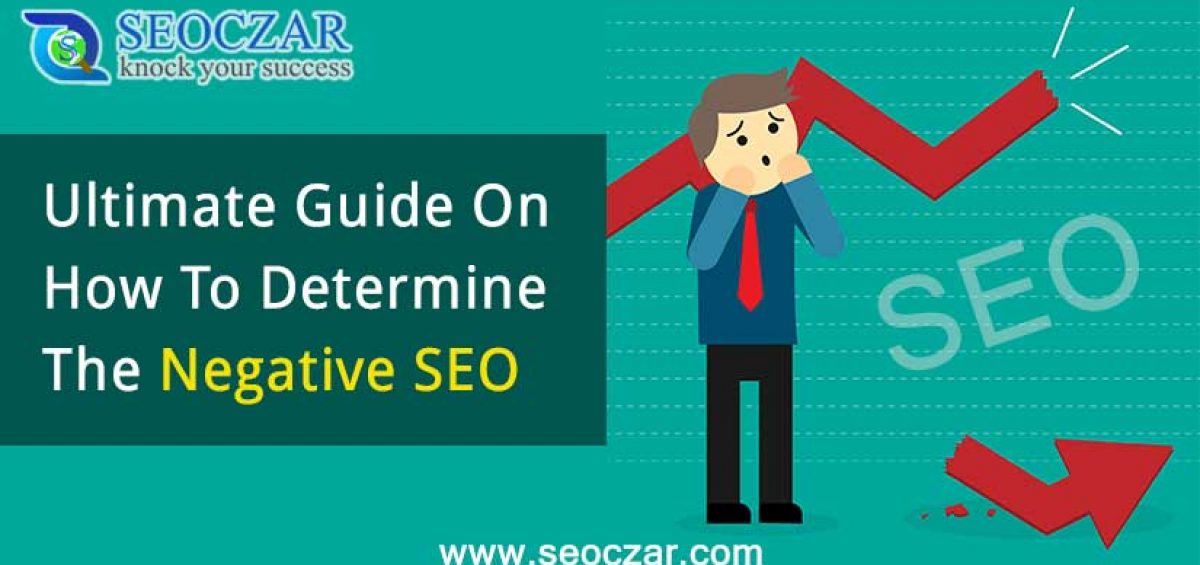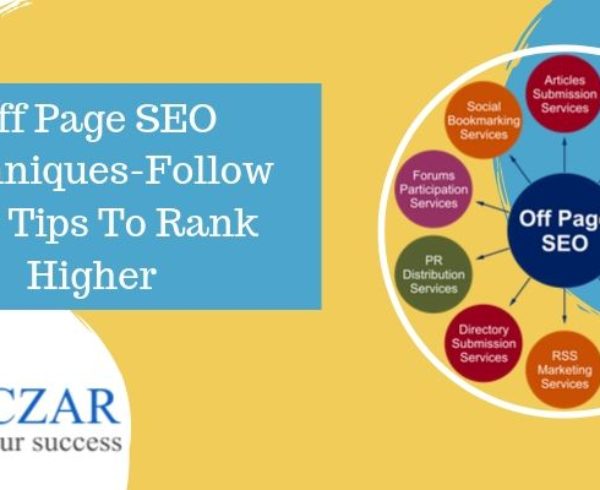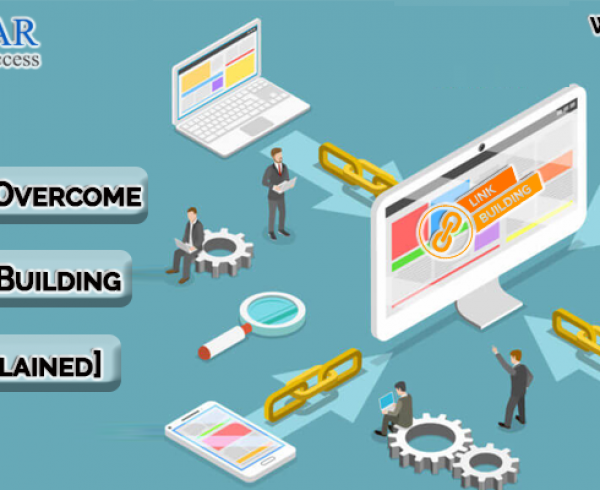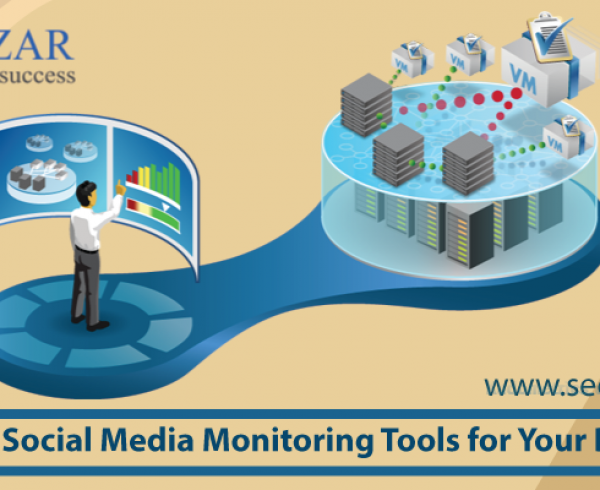We believe that SEO (Search Engine Optimization) is very important for websites. But do you understand, The Way To Determine The Negative SEO, often, when you have been hit by it?
In the intermediate time, it is necessary to fight with it. Further, Google Analytics facilitates this example and offered some strong or simple tools for SEO that allows doing the same.
However, most of the time, we realize that our website rank has declined and quite have a doubt in our mind, that our opponent is doing something. So, to overcome this, Google Search Console helps us to monitor backlinks and maintain a website’s presence on SERP (Search Engine Result Pages.) Search Console is a free service that is provided by Google.
As soon as you progress through the following steps and try to diagnose what happened to you? It is the dark side of SEO and often deals as disavow backlinks.
Before this, let’s discuss the negative SEO and then we will go on our topic —
Table Of Content
- What is negative SEO
- Signs of negative SEO
- What are the effects of negative SEO on a website
- Ways to determine the negative SEO
- How Google And Bing consider my site
- Raw Weblog
- Google Analytics
- Google Search Console
- Bing Webmaster Tools
- How to monitor negative SEO against your website
- How to stop the attacks of negative SEO
What is negative SEO
Negative SEO is an introvert influence on the search ranking of your website, based on Google’s search algorithm or the manual review updates. As we realize that high-quality SEO (Search Engine Optimization) helps to grow the rank of the internet site, whilst it’s far demoted to the ranking of competing for the internet site.
It kills you with a huge variety of low-quality or explicitly black-cop links within the domain.
Alexa Rank is also beneficial to check terrible SEO. This enables to rank the website with the day by day visitors. Which facilitates us to measure the everyday performance of our website and we will without problems discover what day our website was suffering from it.
Semrush on your internet site is also helpful. Semrush is a search analytics software or search engine marketing. Which allows you to discover keywords or site visitors to your internet site.
It includes some common strategies like –
- Counterfeit report,
- Content abrading,
- Even hacking sites,
- Creating thousands of spam links,
- Sending fake backlink removal requests.
A Common Query – Negative SEO Is Real Threat Or Not?
Yes, it is real. There is no doubt because many websites are fighting against it at the same time. As off, correcting is more difficult than preventing.
Signs of negative SEO
If your competitors are trying to disturb you, it does not mean that what they have done has become a cause of your problem. We noticed the numerous folks that are not affected by it.
When someone is actually attacking your link profile and if that attack is going to be effective for you, then, you will usually see an obscure, and low-quality links from different types of root domains. You have a large scale over to come upon it.
Here are some tools which will help in managing your link profile –
- Majestic SEO,
- Open Site Explorer,
- Bing Webmaster Tools,
- Google Webmaster Tools.
What are effects of negative SEO on a website
This is a common question which may arise in the mind, that is negative SEO effects on a website?
It is clear that if you are using some duplicate link or spammy site, so it will harm your website. It can happen due to the following reasons:
1: If you are using the same techniques.
2: And, If you are doing the same mistakes as your competitor does on his website.
Ways to determine the negative SEO
We have divided the search signals into three parts –
- Links,
- Content,
- User signals.
Now we have come to our main point that — How To Determined The Negative SEO? To analyze these parts we need to be able to relay different types of devices.
What’s Your Necessity?
- A material theft tool to review the content.
- Use Google Analytics to review content and consumer signals.
- For assessment of the content material and consumer indicators.
- Bing Webmaster Tools to check content material, links, and user alerts.
- A browser with getting admission to Google and Bing in search of content.
- A hyperlink analysis tool for viewing internal and inbound link information.
- Access to your raw blog for reviewing content material and consumer signals.
- Often, use Google Search Console to review content material, links, and person signals.
Let’s take steps to determine the various tools and scenarios, if you were killed by negative SEO or if this is just a mistake.
1. How Google And Bing consider my site
The easiest and first step to take is to determine how Google and Bing are treating your site?
We like to use both search engines in each audit because they react differently, which helps us to distinguish any problem immediately. What are we looking for?
a. Site: domain.tld
Replace “domain.tld” with your domain. Both engines will return a list of pages from your domain, in some order of importance.
b. What Are Pages Missing That You Want To See Due To Their Value
To determine the source code of those pages and robots.txt handling, see if they are mistakenly being blocked by a misconfiguration or not.
c. What Pages Are Being Demoted
If the index page is not suddenly at the top spot, then maybe something is wrong. Recently running this simple check, we noticed that our preferred URL handling is causing the cannibal of our index page. Which need to be updated or redirected to the 301 loops.
Google had demoted this page on the site: query but was not Bing. The problem was solved by running that simple test and looking at the problematic page.
d. Are There Pages That You Cannot Recognize
Do those pages look as simple as a misconfigured setting in your CMS (Content Management System) that allow awkward sequences, or are these pages off-theme and spammy? The former may be a mistake; The latter is probably an attack.
e. Do Some Branded Questions
Search for domain.ltd, domains and other popular or common phrases associated with your brand. Are not you suddenly ranking for them as you were before? If not, did you withdraw from any suspicious results?
2. Raw Weblog
It is important to have access to your raw weblog. But unfortunately, it is being made quite difficult with broad adoption of GDPR (General Data Protection Regulation.)
It is important that you can access Internet Protocol (IP) registered on every page that comes to your site, in which you do not have the Google Analytics tracking code. By parsing your logs, you can:
a. Acquisition IPs
It determines whether the same group of IPs is checking your site for configuration weaknesses.
b. Distinguish Scrapers
Learn whether scraps are trying to stretch the material extensively or not.
c. Analyze Antiphon Issues
If you have many server response problems where you will not expect them to see them, then you will do now.
If you have access to the analysis of the pattern for your log and the tilt then many issues can be solved. It’s time-consuming but worth doing.
3. Google Analytics
This can be your series because there are so many areas to focus on any sophisticated analytics package. However, let’s focus on a few more obvious pieces:
a. Resilience Estimate
Is it running up or down? It matches what you see in your raw logs. Is Google filtering some bouncing traffic? Does the bounce rate show an outlet when browsing by the browser (source), from the browser or geographic location?
b. Recitation Continuance
It is similar to bounce rate, for user signal purposes, are the sessions shortened? Especially if with the increase in the whole session?
c. All Influx Channels And All Influx Recommendation
Is this source now sending more or less traffic to your source ranking period? Is there an unusual source of traffic coming in fake? When you doubt the negative SEO, there are problems for both the research.
d. Search Console And Landing Page
Similar to the search analytics check on Google Search Console, are there such deviations in which the pages are now getting traffic, or are you seeing a big change in bounce and session duration on the pages you care about?
e. Site Acceleration
All things are equal, a fast site is a better site. Is load time rising? Is this particularly growing on chrome? For specific pages? Are there pages that look mild, which you did not recognize before?
4. Google Search Console
What ought to you do in Google Search Console (GSC) so you can assist decide whether you’re a victim of bad SEO?
a. Message
If there is a major change that Google wants to inform you, like crawling issues of manual action, problems or accessibility due to incoming or external links, the first place to view messages in your GSC. If Google thinks you’ve been hacked, it’ll tell you.
b. Search Analytics
By looking at your questions over time, you can sometimes get a problem. For example, if your branded and important phrases have query volumes connected to the spike, have you seen abstraction in clicks on your pages?
If not, it may be an attempt to influence a user signal. Are your less important pages being sorted into questions you care about? This can point to any problem with your content and content architecture.
c. Link To Your Site
The obvious thing to look at is a large stream of low quality, spammy links. But are they bad links? If I choose some worst link and see if they’re blocking AhrefsBot, then it tells me that they are probably spammy links that need to be known.
d. Internal Links
Which page are you linking heavily from that you did not realize that you were linking? This can be a naval issue, or it can be a situation where you are connecting with the injected Spammy Door page in your CMS.
e. Manual Action
It should also be present in messages, but if you have a manual action, you need to address it immediately. It does not matter what the reasons are; Even if your site has a legitimate attack, you have to fix it immediately.
f. Crawl Errors
Stop the ranking drop due to malicious intentions by checking the stability of your setup. If your server is throwing a lot of 500 responses, Google will crawl it low If this happens, then it is likely that users are having more problems with your web pages, and Rankbrain will slip into ranking as a Rankbrain in user data.
If you add it to raw web log data, you can see whether the server is due to instability attack or not.
5. Bing Webmaster Tools
How can make a decision what is occurring with your Bing ranking? Go for your Webmaster Tools and take a look at for:
a. Site Bustle
Like searching Google Analytics statistics, Bing Webmaster Tools lets in you to fast determine whether your website online is displaying extra or less a seek, if the clicking quantity has modified, then crawling and crawl errors There has been a change, and, of direction, pages listed. You can deliver every section a deeper appearance.
b. Inbound Link
As with Google Search Console, you can see how these links look. Are they absolutely unexpected? Can they be found in various link analysis tools?
6. Link analysis tool
To determine whether you are hit with negative SEO by using your favorite link analysis tool, check these points:
a. Organic key terms
Do you see a normal trend in the ranking? It virtually suits search analytics information from Google, but no longer at all times. It is feasible that you understand beforehand that whatever is bad, but through looking at the equal information by way of an additional visualization it may be decided whether or not there’s a problem or not.
b. New Backlinks And New Domains And IP Referencing
If you are attacking, then this is the place where you will get the most chance, if you see a huge increase in those links which you did not commit and did not want. See both of these reports, because having 2,000 pages on the same domain linking you are seen separately from 2,000 new domains.
In some cases, you can also get a large number of domains linking to the same IP. This is a lazy negative SEO strategy, but it is one of the more common ones.
c. Lost Backlinks And Lost Domains
Another vector of negative SEO is removing the link of the competitor. Are you losing the links that you previously worked hard to secure?
You may need to reach out to those webmasters to find out why? Are you link pages suddenly accessible to you and are now joining the competition? Or are not linking to you at all? Why do you have to find out?
d. Broken Backlinks
Sometimes a linking problem is itself. If you’ve recently moved to a site, have changed an architecture or have updated the plug-in too, then you have unknowingly made a page go offline, resulting in lost link equity. To fix this, it is as easy as to capture a large percentage of initial link equity to get rid of lost pages or redirect pages to a relevant page.
e. Anchor
Not enough time is focused, even if more optimization penalties and filters still exist. Does the link change your anchor text distribution, so that your commercial phrases are placed in an unhealthy range?
Does the overall phrase still look right, but are the singular words more targeted than before? Do you find many incoming phrases with whom you will not be connected?
f. Outgoing Linking Domains And Outgoing Broken Links
It is healthy to see that you are now connecting to the areas where you did not want to link and were checking to make sure that you still want to link to resolve in the form of a valid URL. A CMS, indexed comments and other user-generated content (UGC) – Injecting should be seen in the type areas.
7. Crawling & Technical Equipment
If you have a favorite crawling and technical SEO tool, similar to the link analysis section, use it in your approach to determining if you have been killed by negative SEO.
a. Website Velocity
What does crawl site speed get compared to in Google Analytics or is it compared to different Google Site Speed Tests? Are you interrupted by using the massive useful resource looking to slow down?
b. Depth Index Position
This is where manipulating your CMS setup and net architecture can fairly damage if you’re all of the sudden duplicating or indexing gigantic percent of the pages, for the lack of these pages you wish to have to index.
c. Redirects
That’s, are you prone to opening redirects which are leaching your available link fairness?
d. Crawl Mapping
Conceptually, it can be very useful to try to determine whether there are active pages that you do not really want and how internal link distribution can affect them. Are they all orphan pages (i.e., they exist but are not internally attached), or are they embedded in the site navigation?
e. On-Page Technical Factors
This is the most important part because it is related to determining whether the situation is a negative SEO attack or an internal error. Crawling instruments can support you quickly discover which pages are set to nofollow or noindex or are struggling due to canonicalization issues.
8. Plagiarism Device
How certain is your content material? There are other plagiarism checkers, but Copyscape is the most popular, and it is through:
a. Determine Your Entire Website
The easiest technique to investigate is to have a plagiarism provider crawl to your website. After that, try and to find colossal string suits on other websites located over Google and Bing index.
In the event, you’re the target of false Digital Millennium Copyright Act (DMCA) requests or parasitic scrapers which are making an attempt to each copy.
b. Internal Duplication
Most people believe that a competitor is trying to scrap them and change them, most issues are internally duplicate content in a blog, clear and in tag setup, and inappropriate URL handling.
How to monitor negative SEO against your website
If you see that someone has started a negative SEO for your company, then, following are the key points you need to follow out. Let’s have a look –
-
Make A List Of Backlinks That You Should Remove
Check out the links on the recently created website, and select the bad links, so that you can try to remove them. Add tags to your bad links. Check them manually and decide which ones are harming your ranking, and try to delete them.
As soon as you look like spam, create this list when you receive email alerts with new backlinks.
-
Try To Get Rid Of Bad Links
After identifying the bad backlinks, you need to remove it and contact the webmaster, make a request for removing this backlink from your site. However, if you don’t find any difference between bad and good backlinks, then, have a look at the question: How do we know if a backlink is good or bad?
After this, If that link is not removed and you don’t get any answer. Then you can contact the company which hosts this site and ask them to remove the spammy links from your website.
Most of hosting companies help to remove this type of links from the website.
-
Create A Dispute List
If you have received a manual penalty, you can use the Google Disavow tool.
However, If none of the above methods work, then create a dispute list which you can then submit to Google Webmaster Tools later.
How To Stop The Attacks Of Negative SEO
Here are some ways to prevent negative SEO attacks. Let’s discuss them –
1. SetUp Google Webmaster Tools In The Email Alerts
After the setup process, Google sends you alerts on emails. And when this happens –
- If your website’s pages are not indexed.
- If your website has been malware attacked.
- And if you get a manual penalty from Google.
- Last, but not least: If you lose server connectivity or have problems with the server.
However, If you are not affiliated with Google Webmaster Tools. First of all, you will add your website to this tool.
Then log in to your account and go to the Webmasters Preferences tool. Here you will enable notification of email and after clicking on the “Save” button you will select Alert for all types of issues.
This is the first step. Now we will go to the second phase, which is related to monitoring backlinks from the website.
2. Track To Your Backlinks Profile
This is the most important aspect to stop spammers. However, they will display negative SEO against your websites. Spammers are doing this with the creation of low-quality links or redirects. It is very important to know who makes these types of links on your websites?
If someone makes any type of backlink to your site to see it, then you can usually use tools like Ahref and Open Site Explorer from time to time.
3. Preserve The Best Backlink Of Your Site
Most of the time, spammers are trying to remove your backlinks, through which you have got the utmost traffic on your site. In relation to deleting your backlinks from the website, they fraudulently contact your name and webmaster.
To prevent this from happening, you can do two things –
- Always track good backlinks for your websites.
- Always use an email address from your domain when communicating with webmasters. In this way of communication, you will prove that you work for the website and someone pretends to be you.
4. Protect Your Websites From Malware And Hackers
Protection of a website is so important. There is the last thing which you want for the website, i.e; the security from malware and hackers. There are some points which you have to follow at the time of security for the website –
- Always use numbers and special characters while creating the password.
- If your website allows the users to upload files, then talk to your hosting company.
- Regularly create the backup or databases of those files which are used daily by you.
- If you use WordPress for the website, install the Google Authenticator plugin and create a 2-step verification password. Each time you log in to your WordPress website, you must add the code generated by Google Authenticator on your smartphone (available on iOS and Android.)
5. Check Duplicacy Of Content
This is one of the most common technique. In this technique, spammer copies the content of your website and post it anywhere. And If the content on your website found duplicate than your website will be penalized as well as you lose the ranking of the website.
Further, If your site gets penalized then, overcome it. And if you are not very aware of overcoming the penalization, then, feel free to move along with our blog on How To Recover Your Website From Google Algorithm Update.
6. Monitor Social Media Churn
Occasionally, spammers will create fake accounts on social media using your company or website name. Before receiving followers, try to remove these profiles by reporting them as spam.
However, If someone uses your name on your social media or website, you will be notified, and you can decide whether or not you should take action.
7. Take A Look At The Speed Of Your Website
Suddenly if your website loading speed is slow, then, make sure it is not happening anymore. Because someone is sending thousands of requests per second to your server.
If you do not work fast to stop it, then spammers can insert in your server and make your site much slower than ever before.
However, If the spammer attacked your website and you were impressed, then contact your hosting company and ask to support as soon as possible.
8. Don’t Be A Victim Of Your Own Search Engine Marketing Strategies
You don’t want to use those techniques by which you lose the ranking of your websites and not acceptable to Google. These are some things you should not do:
- Don’t link to websites to a penalty.
- Do not publish a large number of low-quality guest posts.
- Do not sell links from your website without using the “Nofollow” attribute.
- Don’t buy links from the blog network and do not buy links exactly for SEO.
- Do not make too many backlinks on your website using “money keywords.” At least 60% of your anchor texts should use your website name.
9. Do not Make Enemies Online
There is no reason to make an enemy. Never discuss with customers because you never know who you are working with. There are many spammers and reasons why they spam:
- For fun,
- For revenge,
- To pursue competition in search engines.
CONCLUSION
Here, in this blog, we have discussed how to Determined The Negative SEO And Guidelines For Prevention.
Often we concluded its layout, its definition, its signs, and the key points of tools.
Thereafter, we elaborated determining the negative SEO and the way how to prevent the website from it? They add value to any blog post. And, this leads to the end of the blog.
We hope this blog helped you. However, if you found the blog useful, do not forget to use the comment section provided below. Also, share the blog with your peers. You are on your way to getting more exposure.







Leave a Comment